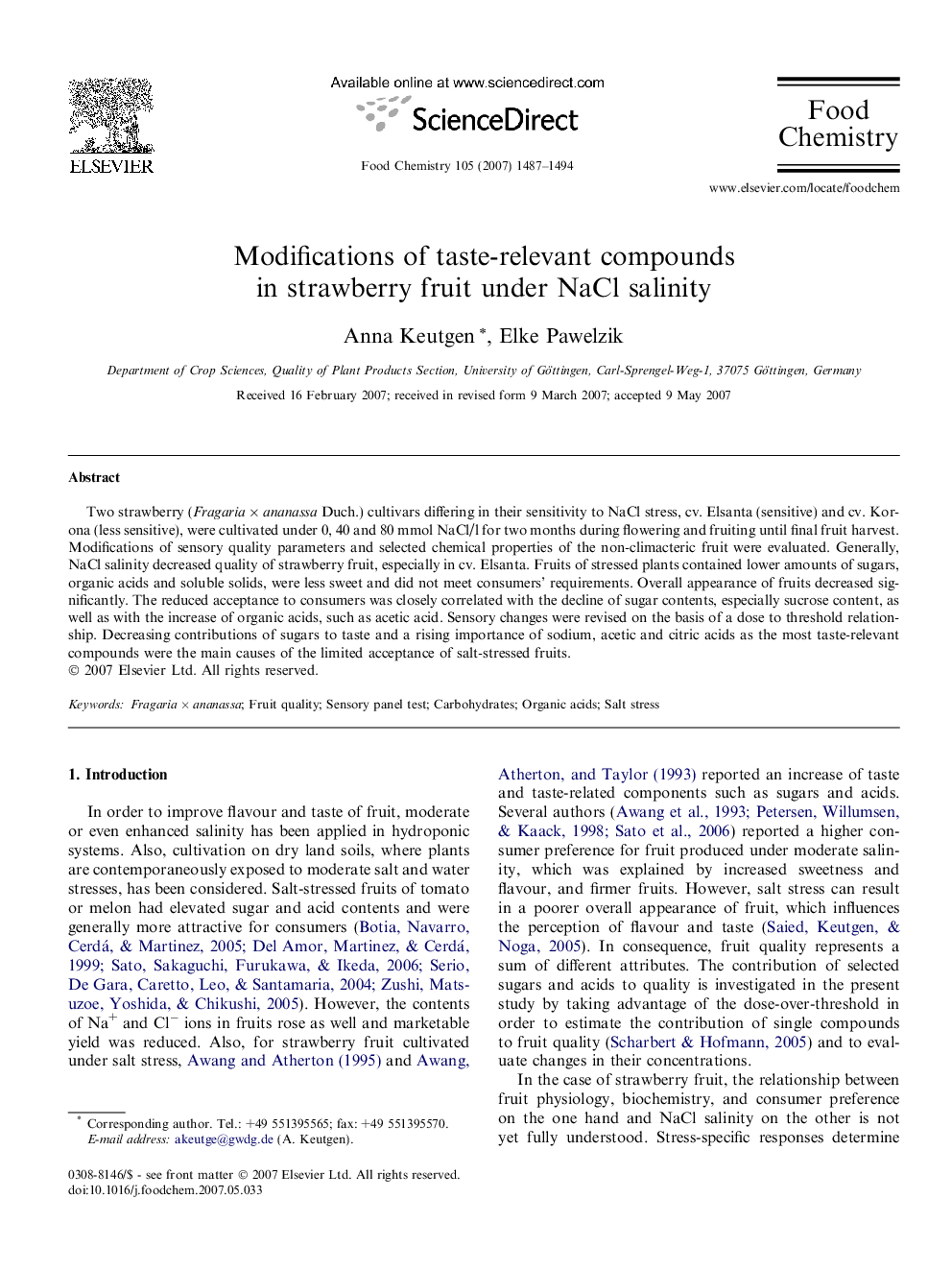| Article ID | Journal | Published Year | Pages | File Type |
|---|---|---|---|---|
| 1189318 | Food Chemistry | 2007 | 8 Pages |
Two strawberry (Fragaria × ananassa Duch.) cultivars differing in their sensitivity to NaCl stress, cv. Elsanta (sensitive) and cv. Korona (less sensitive), were cultivated under 0, 40 and 80 mmol NaCl/l for two months during flowering and fruiting until final fruit harvest. Modifications of sensory quality parameters and selected chemical properties of the non-climacteric fruit were evaluated. Generally, NaCl salinity decreased quality of strawberry fruit, especially in cv. Elsanta. Fruits of stressed plants contained lower amounts of sugars, organic acids and soluble solids, were less sweet and did not meet consumers’ requirements. Overall appearance of fruits decreased significantly. The reduced acceptance to consumers was closely correlated with the decline of sugar contents, especially sucrose content, as well as with the increase of organic acids, such as acetic acid. Sensory changes were revised on the basis of a dose to threshold relationship. Decreasing contributions of sugars to taste and a rising importance of sodium, acetic and citric acids as the most taste-relevant compounds were the main causes of the limited acceptance of salt-stressed fruits.
